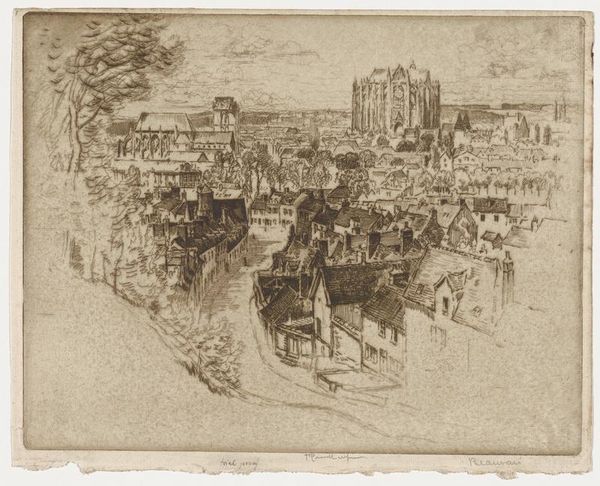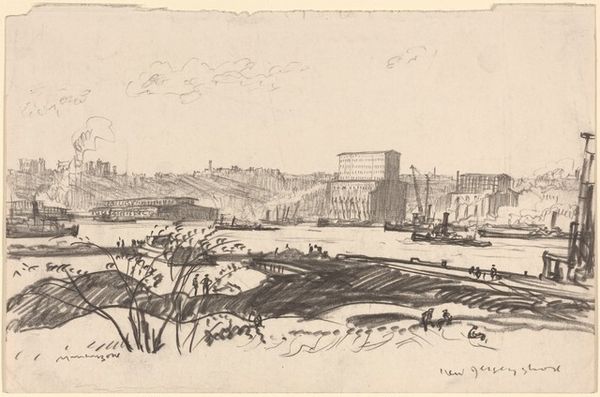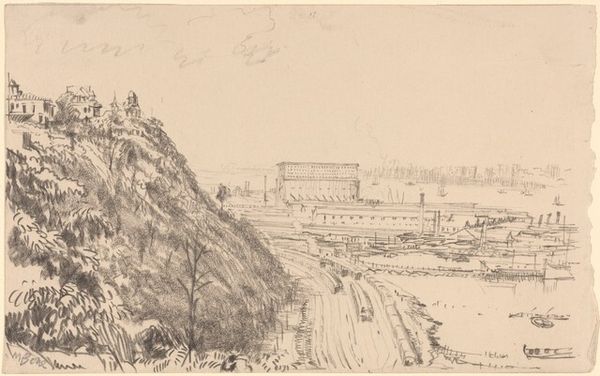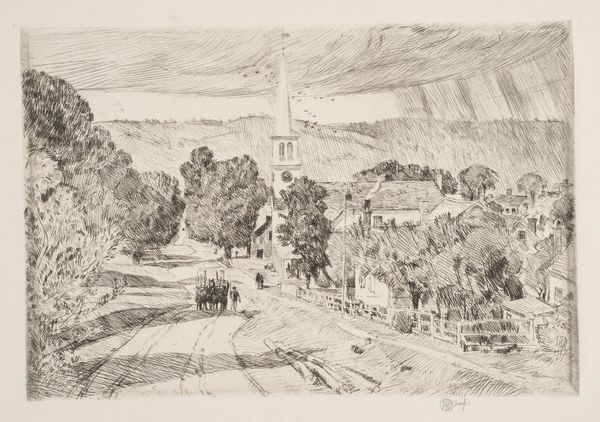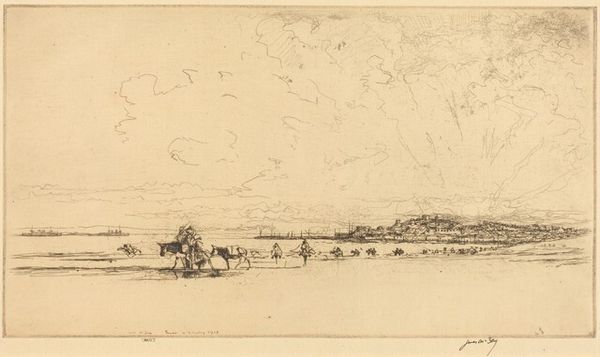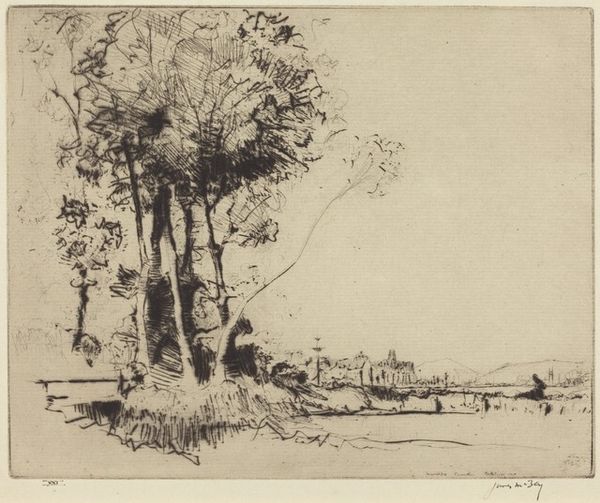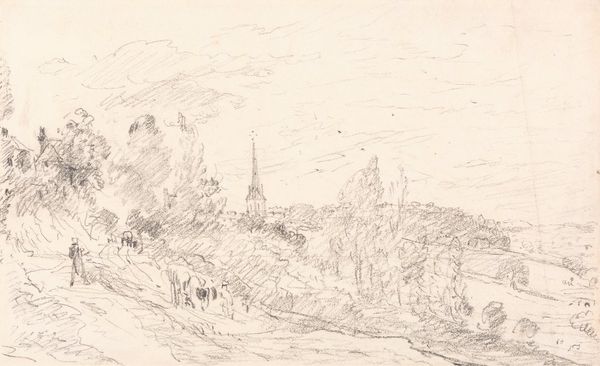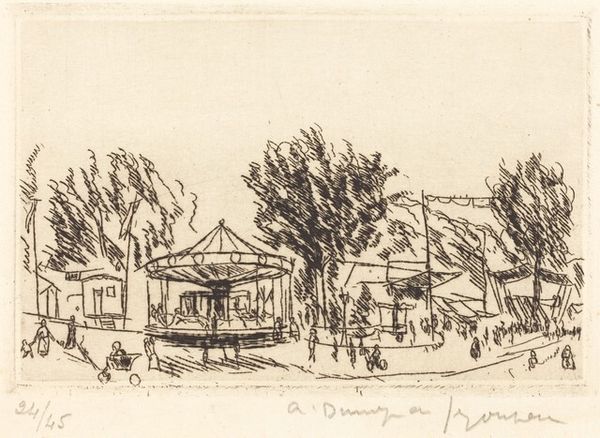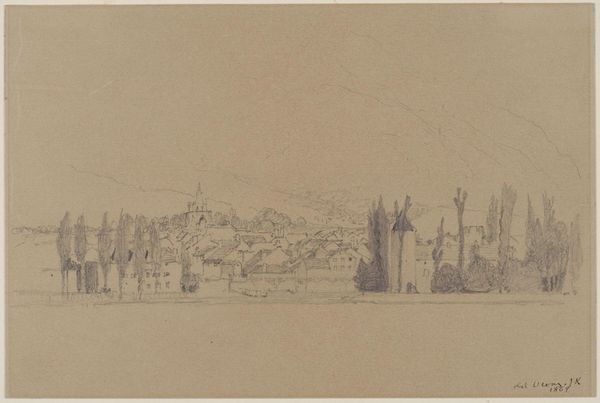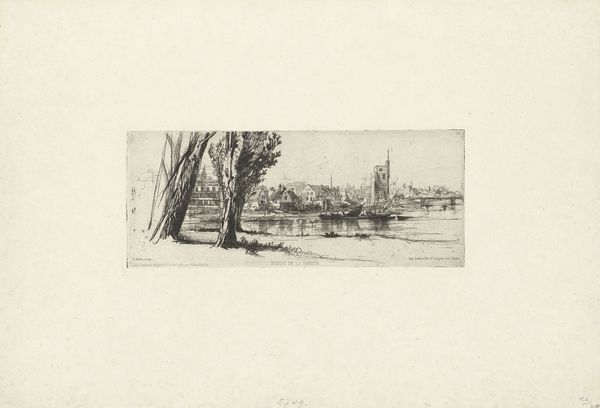
print, etching
# print
#
etching
#
landscape
#
cityscape
#
realism
Copyright: National Gallery of Art: CC0 1.0
Curator: I’m struck immediately by its ephemeral quality, like a dream half-remembered. Editor: Here we have James McBey’s etching from 1911, "Old Castile". Let's consider for a moment the technique—etching allows for incredibly fine lines, a build-up of detail through careful, deliberate mark-making on a metal plate. Curator: The way McBey captured the Spanish landscape—that castle perched on the hill feels so solid, yet the delicate etching gives it an ethereal quality. It's a captivating paradox. Like holding smoke. Editor: The physical labor involved in producing an etching—preparing the plate, applying the acid, proofing and printing—is central to understanding its aesthetic. Think about the historical context; the industrialization of printmaking was changing the art market, making art more accessible but also commodifying artistic labor. Curator: The skeletal trees in the foreground reach skyward, their bare branches contrasting with the solid architectural mass behind. It makes me consider human ambition against the backdrop of enduring nature, you know? Editor: Exactly, McBey was working within a specific social framework. How did the availability and affordability of etching materials influence his practice? Was he targeting a specific market? Prints were often more accessible to a wider audience, democratizing art ownership to some extent. The material informs the market, the process dictates possibility. Curator: I feel a real sense of longing in this picture. It speaks to our constant search for permanence amidst fleeting moments. Perhaps, an emotional reaction for fleeting materials captured by durable matter. Editor: Ultimately, looking at "Old Castile", I am mindful that we're examining not just an aesthetic experience, but also a record of labor and consumption intertwined. That understanding brings depth and a sense of scale to our appreciation. Curator: Agreed, it gives me much food for thought. I can see a tangible harmony emerging where the material speaks so fluidly through time. Editor: And with that, we perhaps view the etching beyond a pretty image and locate it within the material circumstances of its creation. Thank you.
Comments
No comments
Be the first to comment and join the conversation on the ultimate creative platform.
